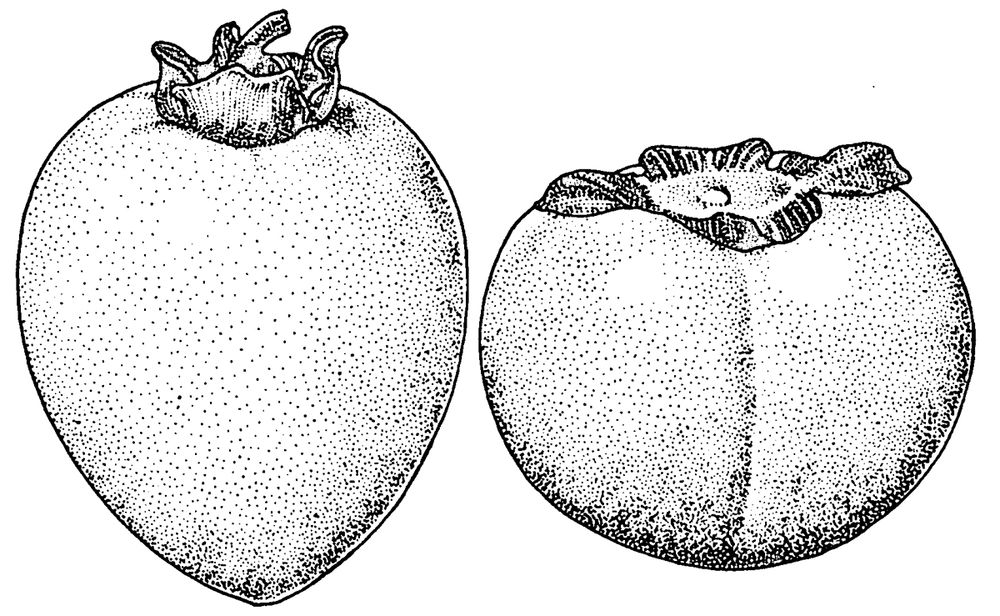Persimmon
Diospyros kaki
Published 1986
It should come as no surprise that the persimmon, as perfect as a gleaming, lacquered bud vase, is cultivated primarily in Japan, and is native to China. The species name, kaki, is also the Japanese name for the fruit (Diospyros, the genus, indicates that it belongs to the Ebony family). Thanks probably to Commander Perry’s expedition, it is this species that is raised today in the United States. And because of our growing Oriental population, there is an ever-increasing demand here.

While the Oriental fruit is the most familiar, it is the small native American Diospyros virginiana that gave us the word persimmon—from the Algonquin putchamin or pessemin (and a handful of other transliterations). The Algonquins collected the bite-sized treats jam-ripe from the ground where they fell and consumed them on the spot; or they dried the fruit and formed it into bricks for winter enjoyment. While most countries designate the fruit as kaki, Americans have held on to the Indian word despite the fact that few have tasted the difficult-to-obtain fruit from which the name derives.
Become a Premium Member to access this page
Unlimited, ad-free access to hundreds of the world’s best cookbooks
Over 160,000 recipes with thousands more added every month
Recommended by leading chefs and food writers
Powerful search filters to match your tastes
Create collections and add reviews or private notes to any recipe
Swipe to browse each cookbook from cover-to-cover
Manage your subscription via the My Membership page
In this section
Part of
Advertisement
Related Recipes
-
-
-
-
Related Reference
-
-
-
-
Advertisement



